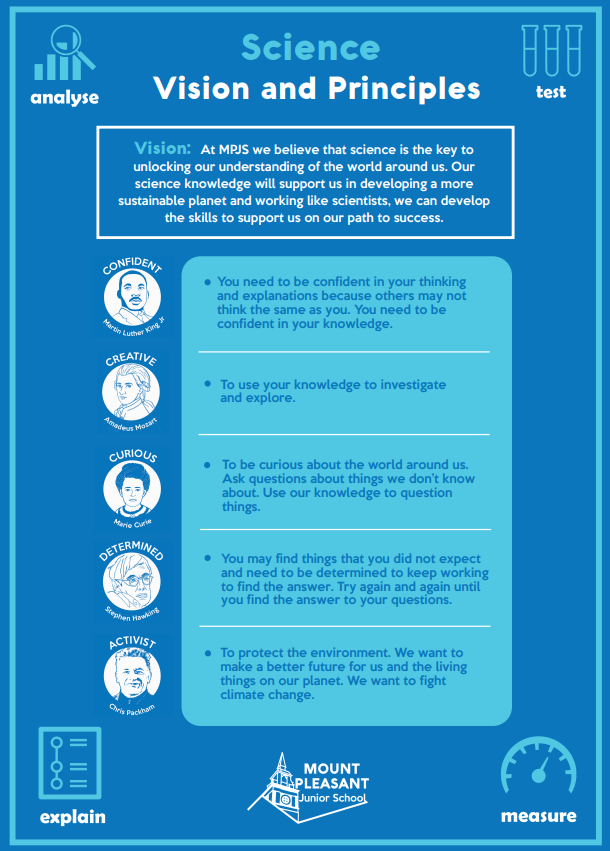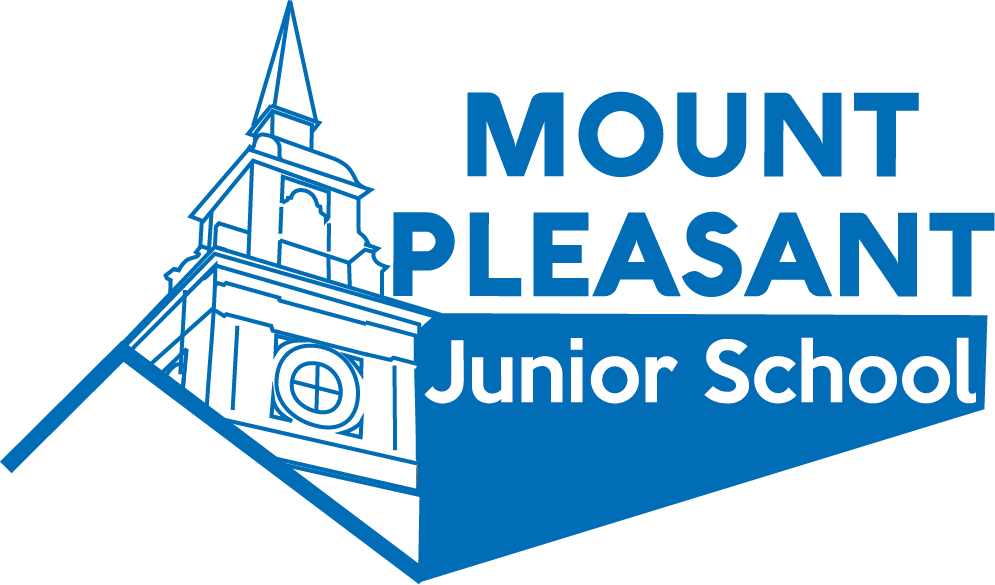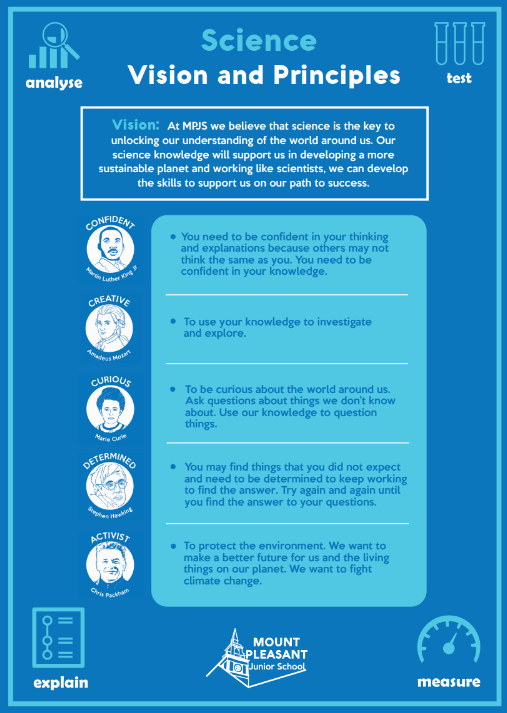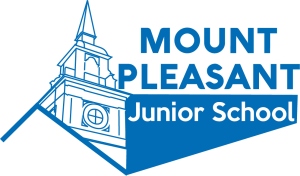Science

The Science Curriculum at MPJS
At Mount Pleasant Junior School, Science is taught to ensure children have the opportunity to work and think like a scientist. We teach Science using a carefully considered spiral curriculum so that children have the opportunity to revisit and deepen their learning in biology, chemistry and physics. We have identified the significant concepts that all children need to know and remember. These are organised into specific scientific enquiries formulated around learning questions. They explore these questions for a sequence of lessons. Within our learning questions, we have identified a number of opportunities for children to have educational visits and visitors that act as a launchpad for learning and contextualise abstract concepts for them, for example, Year 5 visit Winchester Planetarium. We also have enrichment opportunities through our responsible roles and clubs such as Gardening Gang, Team Wilder and Healthy Eating. We aim for children to leave us with both knowledge and skills to understand themselves and the world around them.


